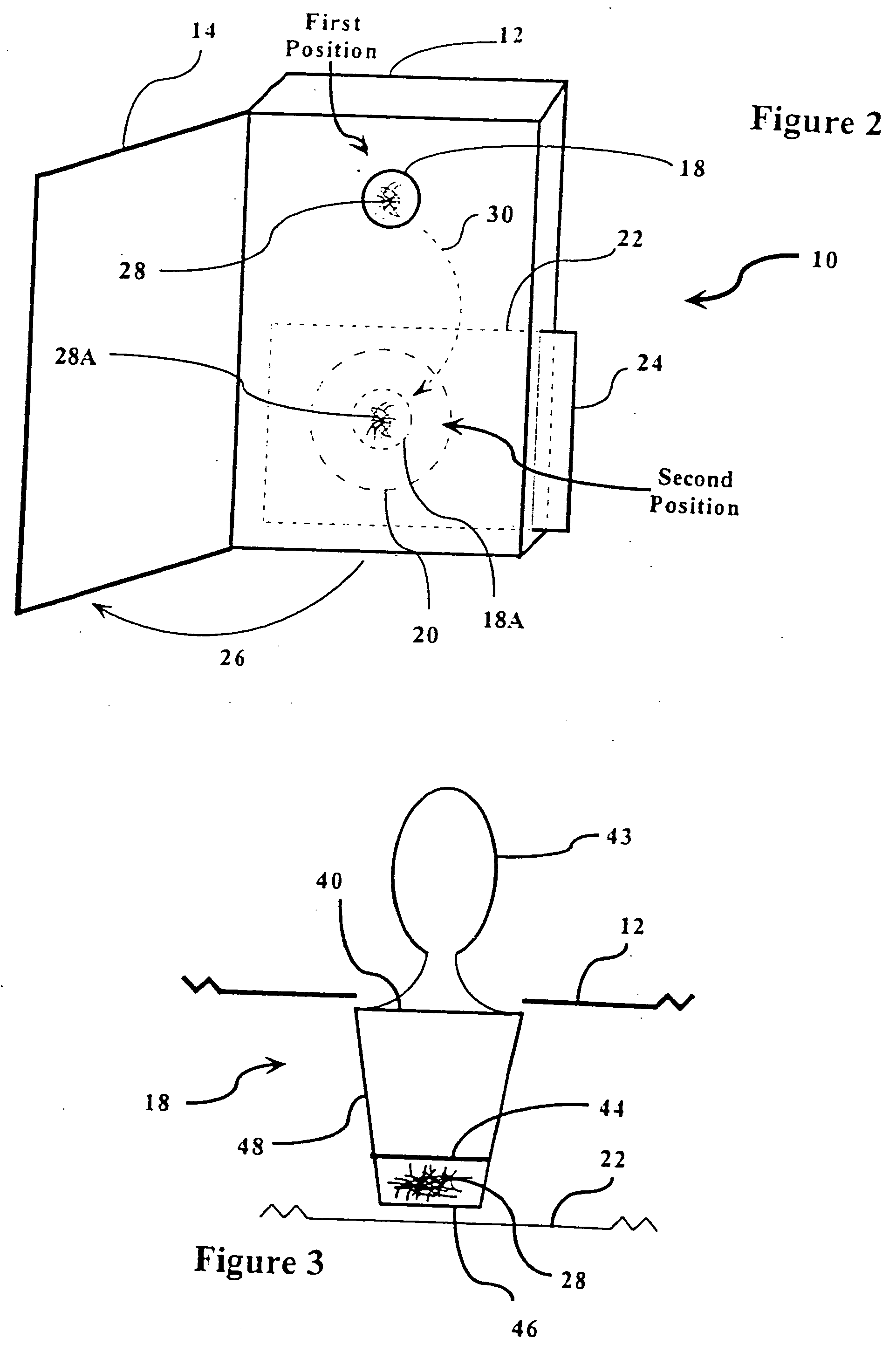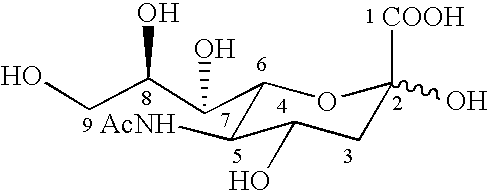Viral detection method using viral encoded enzymes and chemiluminescent substrates
a technology of chemiluminescent substrates and enzymes, applied in enzymology, biochemistry apparatus and processes, instruments, etc., can solve the problem that the system is sufficiently unencumbered to be usable by a layperson
- Summary
- Abstract
- Description
- Claims
- Application Information
AI Technical Summary
Benefits of technology
Problems solved by technology
Method used
Image
Examples
example
[0057] Throat swab specimens were collected using a foam swab from patients complaining of flu-like symptoms. The foam swab was then extracted into a buffered solution at pH 5.4 containing a detergent. The detergent extract of the patient specimen was then filtered through a 10μ filter. The filtrate was collected into amber vials containing the 1,2-dioxetane 4,7-dialkoxy-N-acetylneuraminic acid and then incubated at ambient temperature for 10 minutes. The reaction was terminated by adding a highly alkaline solution containing hydrophobic compounds and fluorescer molecules. This mixture was then transferred rapidly to a plastic manifold cell seated above a sensitive photographic film inside a light-tight chamber. Light from the released product undergoing decomposition strikes the photographic film to produce a white spot for image against a black background indicating the presence of either influenza A or influenza B virus in the patient specimen. Alternately, the emitted light from...
PUM
| Property | Measurement | Unit |
|---|---|---|
| time | aaaaa | aaaaa |
| volume | aaaaa | aaaaa |
| temperature | aaaaa | aaaaa |
Abstract
Description
Claims
Application Information
 Login to View More
Login to View More - R&D
- Intellectual Property
- Life Sciences
- Materials
- Tech Scout
- Unparalleled Data Quality
- Higher Quality Content
- 60% Fewer Hallucinations
Browse by: Latest US Patents, China's latest patents, Technical Efficacy Thesaurus, Application Domain, Technology Topic, Popular Technical Reports.
© 2025 PatSnap. All rights reserved.Legal|Privacy policy|Modern Slavery Act Transparency Statement|Sitemap|About US| Contact US: help@patsnap.com



